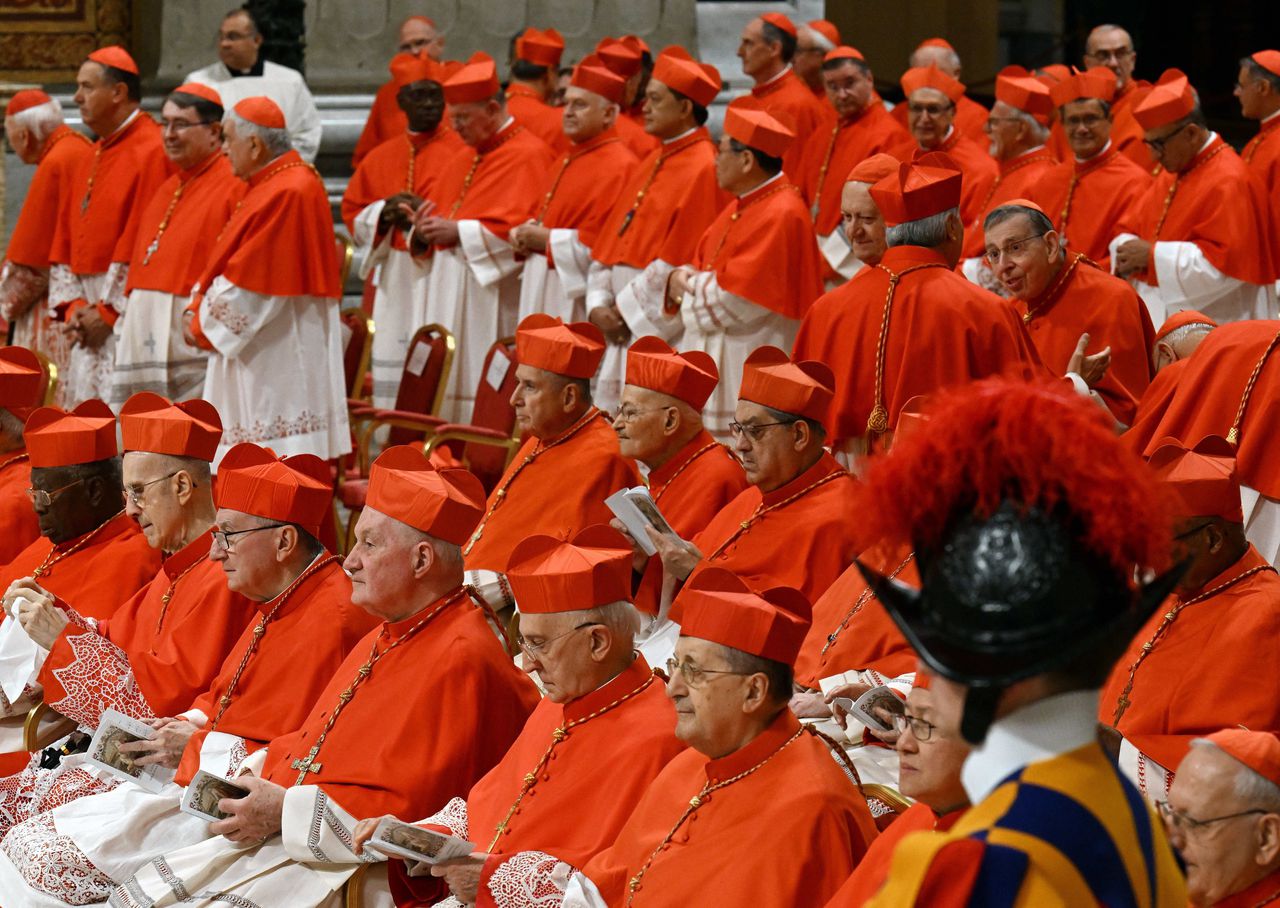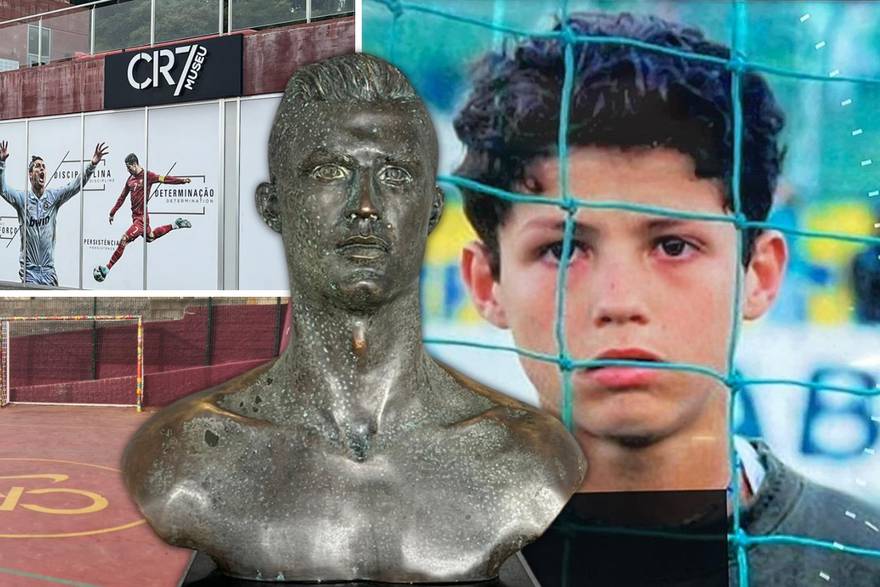Pope Francis gave clear instructions for his funeral. And what happens afterwards?

The Vatican, the city of Rome and more than 1.3 billion Catholics are in mourning worldwide. Pope Francis, leader of the Roman Catholics and head of state of the small ecclesiastical city state of Vatican City, died on the early morning of Easter Monday. The pope was 88 years old.
Jorge Mario Bergoglio, from Argentina, was the first modern pope who did not come from Europe. While Western Europe has been rapidly secularized in recent decades, it applies much less elsewhere. Two in three Catholics in the world do not live in Europe or North America, and against the mid-century that will be three out of four. Franciscus’ election, in 2013, illustrated all the growing importance of the Catholic Church in other parts of the world.
The Argentinian pope was put on austerity. Last year he gave clear instructions for a simpler funeral ritual. « We have simplified it considerably, and I will be the first to test it! » He said with a joke. But despite these recent adjustments, his death puts a tight protocol into operation with often age -old rituals.
His body will be laid out in the St. Peter’s Basilica in the Vatican. Thousands will bring Pope Francis a final greeting there. He was not only the religious leader of the global Catholic faith community, but also enjoyed a great moral authority as a pope. His funeral will therefore also be attended by world leaders.
Responses to death Pope: ‘A man who was always on the side of the most vulnerable’
In the past, the coffin was put on a cata scale or slightly raised platform, but Francis himself indicated that he should not be placed on a pedestal. And where former popes were buried in three suitable coffins in three, certain Francis that one coffin was enough for him. According to him, a pope should be buried with dignity, like any other Catholic, but does not have to be elevated above the others.
Outside Vatican City
Although the funeral will most likely take place on Sint-Pietersplein, at his own request, the deceased Pope will not be buried in the crypt under the Sint-Pietersbasiliek, the final resting place of nearly a hundred popes. Franciscus said in an interview in 2023 that he would like to be buried in the Santa Maria Maggiore (Sint-Maria the superior), a papal basilica in the Roman district of Monti, not far from Central Station, and one of Franciscus’ favorite churches in the Italian capital. He thus becomes the first pope in a century to be buried outside Vatican City.
Rome will open his holy doors before the start of the jubilation year
Now that the pope has died, the Catholic Church and the Vatican are in ‘sede vacant‘(empty chair) – Temporary there is no formal leader. The official power has been chosen as Francis’ successor is in the hands of the College of Cardinals, which, however, does not make major decisions. About two weeks after the papal funeral, the conclave, the election of a new pope, begins in Vatican City. Normally a maximum of 120 cardinals participate in the conclave, but Francis has created a lot more voting cardinals, as is called in ecclesiastical jargon. At the end of last year, 140 cardinals younger than 80 years were, which means that they can vote for a subsequent conclave, if they are not yet older than 80. The Netherlands has one cardinal, Wim Eijk (71), the very conservative Archbishop of Utrecht.
White smoke
The conclave is surrounded by mystery. A secret voice process takes place behind the closed doors of the Sistine Chapel. The word conclave comes from the Latin ‘cum clave’, which means ‘with the key’, or locked. The cardinals keep voting rounds there until a two -thirds majority agrees on a new pope.
At that moment, white smoke appears from the chimney of the Sixtine Chapel. The public announcement also happens in Latin, with the famous words’Habemus Papam!‘(We have a pope!) That presented the new church leader to the world.
Progressive or conservative?
Will it again be a social progressive, such as Francis, or is the conservative wing back in his hands? The latter seems unlikely, not only because Francis has created 80 percent of the cardinals entitled to vote himself, so that he also weighs posthumously on the election of his successor, but also because after the resignation of his predecessor Pope Benedict XVI wanted a different course.
Read also
Francis, the first non-European pope, was socially progressive but in other areas just as original conservative as its predecessors
As a successor to Francis, there are several good contenders from Asia, such as Archbishop Tarcisio Isao Kikuchi from Tokyo, who is also the chairman of the international aid organization Caritas Internationalis.
But a conclave remains extremely unpredictable. Not only because the voting process is strictly secret, also because cardinals are certainly not opening openly to become pope. They are, however, because of their environment or the media as contenders or ‘papabilis’ tipped. Not every cardinal is happy with that: it is sometimes said that who is like papabile The conclave enters, it certainly does not come out as pope.
That also applies the other way around. With the most recent conclave, in 2013, Jorge Mario Bergoglio saw himself as a ‘kingmaker’, who could push the voices in a certain direction, but not like someone who had a chance to become a Pope. The next day the Argentinian greeted with a warm one ‘Buonasera!‘As the brand new Pope Francis the crowd of believers on Sint-Pietersplein.

:format(webp)/s3/static.nrc.nl/wp-content/uploads/2025/02/18151756/data128219592-41eed4.jpg)
:format(webp)/s3/static.nrc.nl/bvhw/files/2019/08/web-1708zatwongjpg.jpg)
:format(webp)/s3/static.nrc.nl/images/gn4/stripped/data132512191-bf7b93.jpg)
/s3/static.nrc.nl/images/gn4/data133305174-ec8c91.jpg)



